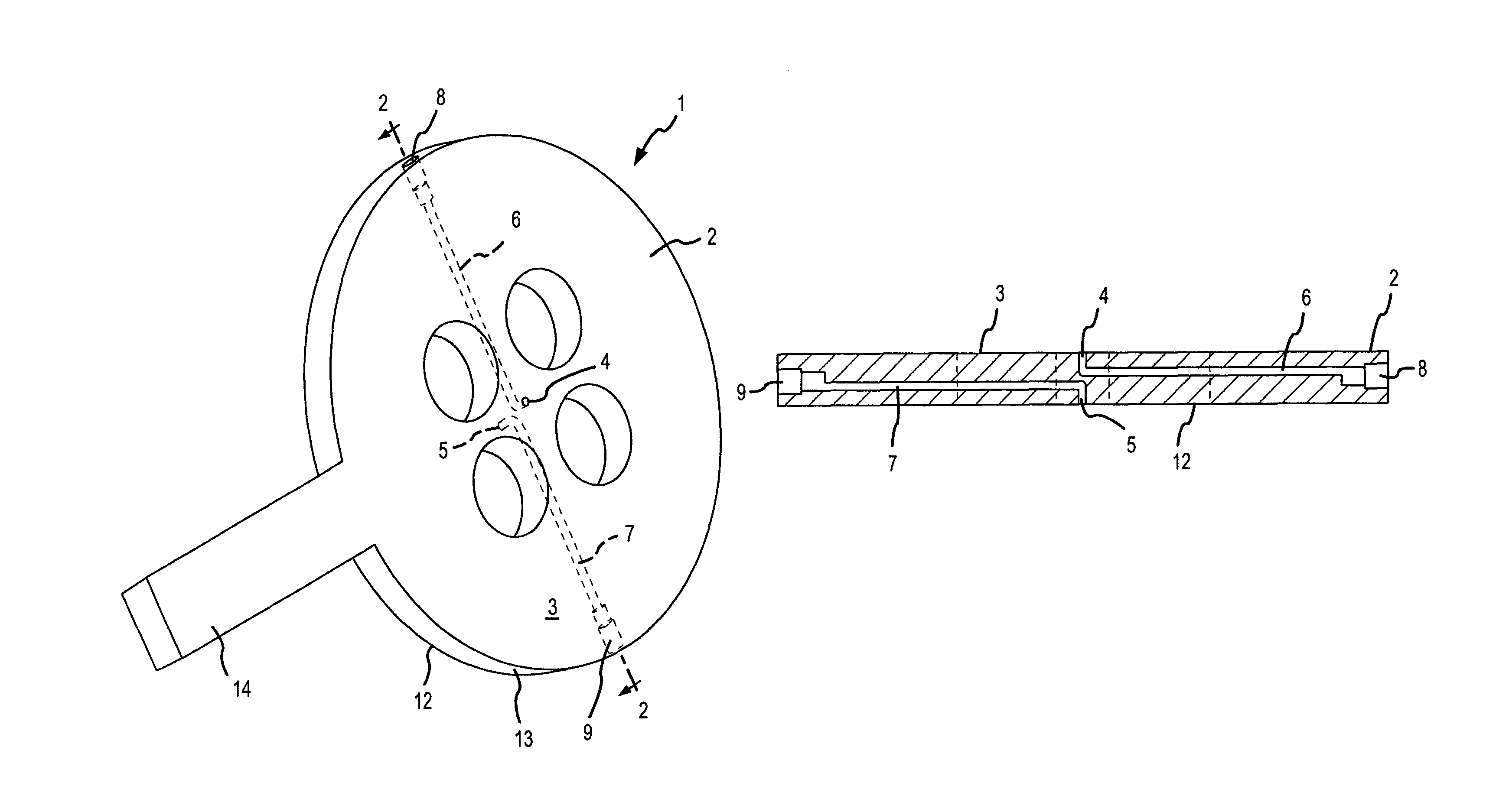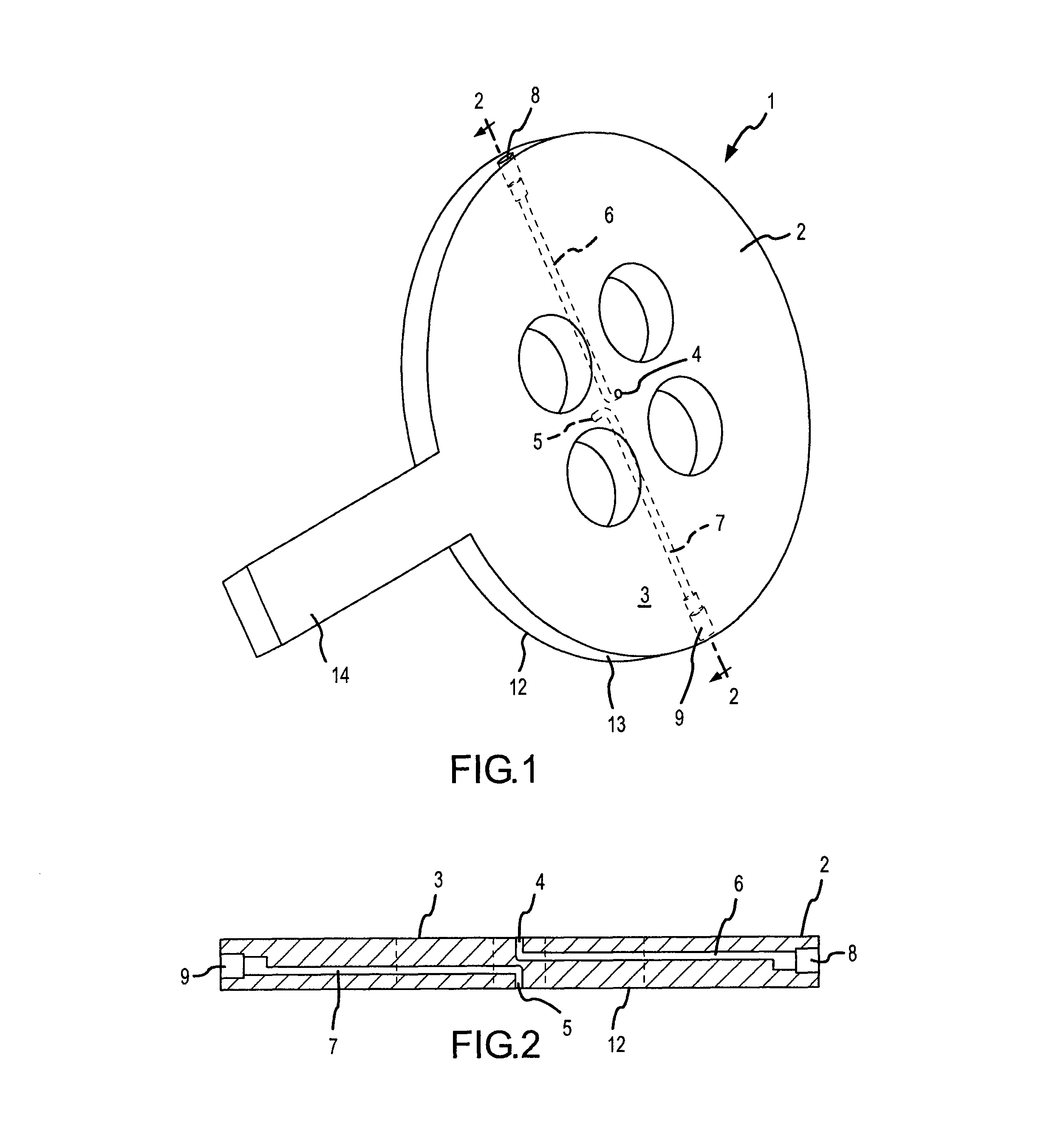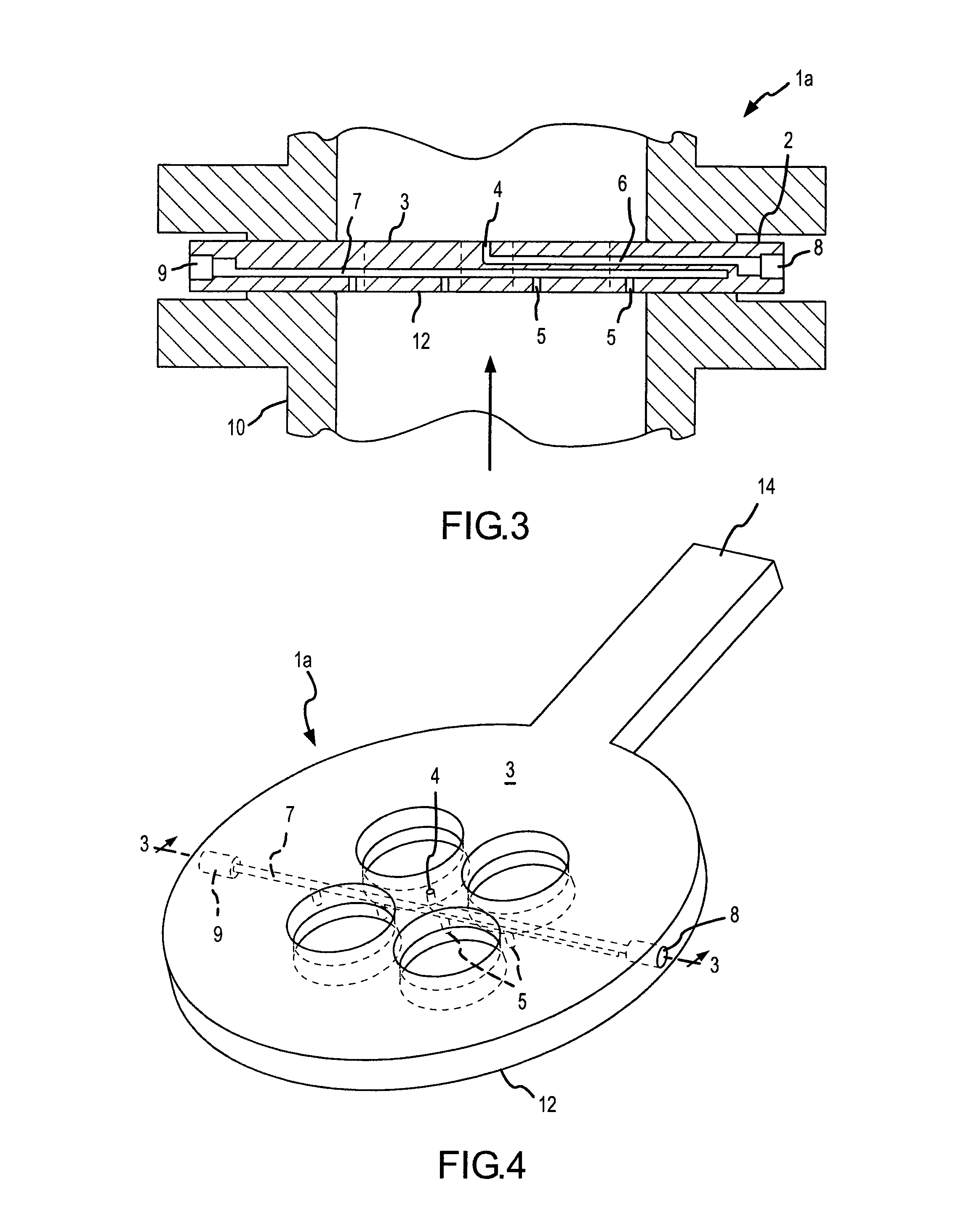Locating of pressure taps on face of orifice plate device
a technology of orifice plate and pressure tap, which is applied in the direction of measuring devices, volume/mass flow by dynamic fluid flow effect, instruments, etc., can solve the problems of increasing the susceptibility of performance errors of typical axially spaced pressure ports, and not being able to accurately indicate the rate of fluid flow
- Summary
- Abstract
- Description
- Claims
- Application Information
AI Technical Summary
Benefits of technology
Problems solved by technology
Method used
Image
Examples
Embodiment Construction
[0021]A simplified version of the present invention is shown in FIGS. 1 and 2. The averaging orifice plate flow element comprises a flat plate 1 having a circular portion 2 and a stem 14. On a diametric line across the circular portion there is disposed within the plate a first conduit or bore 6 that interconnects the opening 4 in the downstream face 3 of the circular portion 2 of the plate to a first pressure sensing port 8 disposed in the circumferential edge 13 of the circular portion 2 of the plate. A second conduit or bore 7 interconnects an opening 5 in the upstream face 12 of the plate to a second pressure sensing port 9 in the circumferential edge 13 of the circular portion 2. The pressure ports are arranged to be connected to a traditional fluid manifold (not shown) and into a pressure transducer (not shown). An electrical signal that represents the sensed differential pressure between the ports 8 and 9 is transmitted by transmitter (not shown) to a processing unit (not sho...
PUM
 Login to View More
Login to View More Abstract
Description
Claims
Application Information
 Login to View More
Login to View More - R&D
- Intellectual Property
- Life Sciences
- Materials
- Tech Scout
- Unparalleled Data Quality
- Higher Quality Content
- 60% Fewer Hallucinations
Browse by: Latest US Patents, China's latest patents, Technical Efficacy Thesaurus, Application Domain, Technology Topic, Popular Technical Reports.
© 2025 PatSnap. All rights reserved.Legal|Privacy policy|Modern Slavery Act Transparency Statement|Sitemap|About US| Contact US: help@patsnap.com



